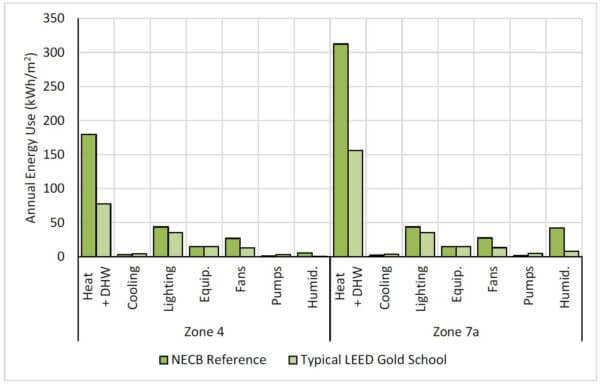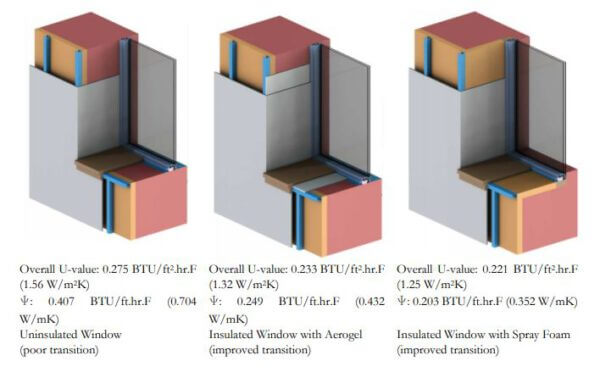Evaluating Patterns of Building Envelope Air Leakage with Infrared Thermography
This study demonstrates a method involving qualitative and quantitative components that can be used to characterize locations of air leakage with infrared thermography.
Read MoreLow-Energy Building Detail – Point Supported Balconies
Want to reduce thermal bridging of balconies by more than 75% for your low carbon, zero energy and passive house projects? Check out this high performance detail!
Read MoreLatest version of the Building Envelope Thermal Bridging Guide provides new and timely data to help with calculations required by emerging energy codes and standards
The newest version of the Building Envelope Thermal Bridging Guide (BETB) is now available and is the first of four planned expansions!
Read MoreInvestigating the Potential Impact of a Compartmentalization and Ventilation System Retrofit Strategy on Energy Use in High-rise Residential Buildings
Explore high-rise residential building retrofits: using compartmentalization and in-suite ventilation systems to improve indoor air quality and reduce GHG emissions.
Read MoreEvaluating Condensation Resistance for the Design of Wall Assemblies
This paper explores how practitioners can approximate the condensation resistance of wall assemblies for residential buildings during the design phase, allowing identification of details where more comprehensive analysis is warranted.
Read MoreThermal Performance of Three Dimensional Building Envelope Assemblies and Details for Improving the Accuracy of Whole Building Performance Simulation
Thermal bridging through insulation layers in the building envelope reduces the thermal performance of building envelope assemblies and heat flow through thermal bridging can have a detrimental impact on whole ...
Read MoreBC Energy Step Code Development for Public Sector Buildings
Morrison Hershfield has been retained by the Building and Safety Standards Branch of the Province of British Columbia to develop and analyze public sector building archetypes for Step Code, with ...
Read MorePassive Cooling Measures for Multi-Unit Residential Buildings
This study of passive cooling strategies uses energy simulations to assess the reduction in overheated hours and maximum temperature in suites in multi-unit residential buildings simulated with a variety of ...
Read MoreAttic Ventilation and Moisture Research Study
This study looks at the level of mould growth in wood-framed buildings constructed in coastal climates, particularly on the roof sheathing of ventilated attics. It includes those buildings that fully ...
Read MoreGuiding Teams by Hygrothermal, Energy, and Thermal Comfort Analysis while Managing Uncertainty
Managing uncertainty is core to all engineering analysis of building performance. Effective solutions are established when managing the risks associated with designs are balanced with the benefits to the clients ...
Read More

Building Performance Library
Analyzing how all building systems function together to achieve greater energy efficiency, improved durability and optimized performance.









